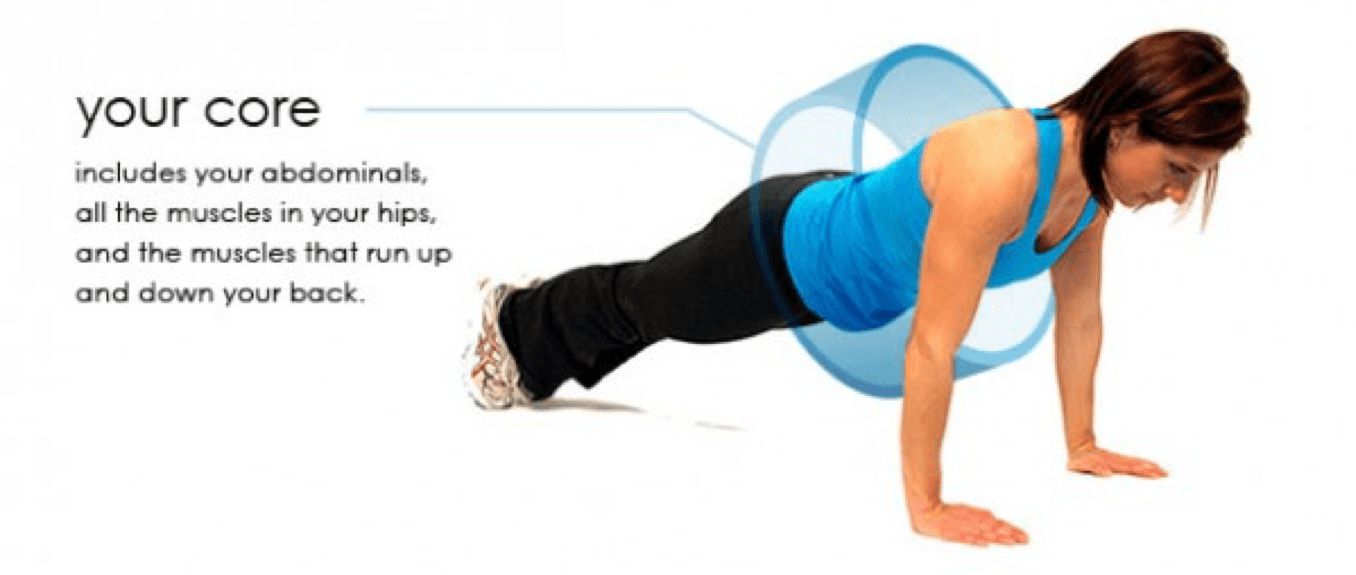
It is time to be aware about heart disease, stroke, and other cardiovascular diseases. Cardiovascular disease is the number-one killer in the world, and it accounts for one in three deaths in the United States annually. While there are many lifestyle factors that can affect one’s risk of heart disease, including smoking and exercise, diet plays a significant role in heart health. Processed, salty foods can lead to higher blood pressure, which puts one at risk for heart disease; foods high in saturated or trans fats can raise LDL cholesterol, another risk for heart disease and diabetes. Many Americans are aware that they need to eat a healthy diet, but most do not. The American Heart Association estimates that less than one percent of Americans meet the AHA’s “ideal healthy diet.” Perhaps you would like to incorporate more heart-healthy foods into your diet, but it is difficult to know which foods truly contribute to a healthy heart when it seems that there is a new “superfood” or trendy supplement every month. Instead of relying on the latest fads, try to incorporate these nutrients into your diet, which are backed by years of research:
* Omega-3s: Omega-3 fatty acids have many benefits for the heart. They decrease the risk of sudden cardiac arrest, slow the growth of plaque, and reduce damaging inflammation. Because fatty fish are rich in omega-3s, the American Heart Association recommends two servings of fatty fish each week, such as salmon or sardines. You can also find omega-3s in other foods, too, like olives and olive oil, walnuts, avocados, flaxseed, and chia seeds.
* Fiber: Numerous studies have linked fiber with heart health due to lower LDL cholesterol levels, lower blood pressure, and lower risk of heart disease. Whole grains, like oatmeal and brown rice, are an excellent source of fiber. Legumes, such as lentils, peas, and kidney beans, are another good choice; not only are legumes rich in fiber, they are a high-protein substitute for meats full of saturated fat.
* Antioxidants: While studies have shown no benefit in taking antioxidant supplements, diets rich in antioxidant-filled fruits and vegetables have shown a lower risk of cardiovascular disease. Antioxidants help rid the body of free radicals, which can cause damage to the cardiovascular system. While all fruits and vegetables are healthful, the nutrients of some foods show special benefit to the heart, such as those high in vitamins A and E and carotenoids. Tomatoes, blueberries, citrus, and greens like kale and spinach all top the list as heart-healthy choices; however, any fruit or vegetable is a good choice, especially if it’s in place of a processed snack. Tea is also packed with antioxidants; one study showed that those who drank three to six cups of tea daily had a 45 percent decreased risk of death from heart disease. Don’t forget dessert! Dark chocolate (more than 70 percent cocoa) has been linked to lower blood pressure and improved cholesterol levels.
Fight back against the number-one killer, and eat a diet rich in omega-3s, fiber, and antioxidants to lower your risk of cardiovascular disease drastically.
Avoiding sweetness altogether is unnatural and unnecessary. However, the overconsumption of processed sugar has become a widespread epidemic with the average American consuming 2-3 pounds of sugar each week!
The human body is designed to breakdown complex carbohydrates in whole grains and fresh fruits and vegetables. Your body doesn’t recognize processed carbs or sugars, so when you consume them, nutrients are pulled from your bones, muscles, brain and other tissues in order for them to metabolize, leaving your body deficient of vital vitamins and minerals.
Sugar also depresses your immune system leaving you susceptible to illnesses, and it raises insulin levels which promotes the storage of fat leading to weight gain, high blood pressure and type 2 diabetes. Your gut can also be affected as sugar promotes the development of parasites, worms and fungi, which encourages the growth of Candida Albicans, a fungus causing symptoms ranging from fatigue and weight gain to joint pain and gas.
Other ways sugar affects your health include:
- Increased anxiety and depression
- Difficulty concentrating
- Increased risk of osteoporosis, kidney damage, Crohn’s disease and heart disease
- Speeding the aging process causing wrinkles and gray hair
- Increases fluid retention
- Promotes tooth decay and periodontal disease
The “sweet” thing is that you do not have to give up the sweetness of sugar entirely in order to be healthy; you just need to replace it with better alternatives. Stevia and Xylitol are natural sugar alternatives found in the fibers of fruits and vegetables and do not cause spikes in blood sugar. Raw honey is another option as it is packed with antioxidants, minerals, amino acids and enzymes. Other options include agave nectar, barley malt syrup, maple syrup and evaporated cane juice as these all have minimal impact on blood sugar, are less refined and have more nutrients than table sugar. Choose wisely and read nutrition labels so you can make the sweetest decision for your body and health!

What?
The group of muscles that stabilize the spine and allows increased force generation by arms and legs. Includes transversus abdominis, internal/external obliques, etc.
Why?
Key exercises, like swimming, cycling and running themselves, should involve core stabilization, independent limb movements, and cooperation among several muscles that are centrally involved in swimming and pedaling stroke and running stride.
Core Strength Training and Athletic Performance
Because the muscles of the trunk and torso stabilize the spine from the pelvis to the neck and shoulder, they allow the transfer of powerful movements of the arms and legs. All powerful movements originate from the center of the body out, and never from the limbs alone. Before any powerful, rapid muscle contractions can occur in the limbs, the spine must be solid and stable and the more stable the core, the most powerful the extremities can contract.
Training the muscles of the core also corrects postural imbalances that can lead to injuries. The biggest benefit of core training is to develop functional fitness – that is, fitness that is essential to both daily living and regular activities.
Core strengthening exercises are most effective when the torso works as a solid unit and both front and back muscles contract at the same time, multi joint movements are performed and stabilization of the spine is monitored.
How?
No Equipment Core Strength Exercises
Body weight exercises are very effective for developing core strength. They are also the type of exercise many athletes and coaches rely on for regular core training. They include:
Plank – Prone Core stabilization: balance all your weight on your knees and forearms. Keep your back as straight as possible. Maintain the weight on your forearms while you slowly lift your knees off the ground. Hold for 30 seconds – 3 sets.
Side Plank – Core Stabilization: Balance all your weight on your forearm and side of your knee. Keep your hips straight up and down – push bottom pelvis forward and the top of your pelvis back. Keep your body as straight as possible and do not let your hips sag toward the ground. Level 1 – on the bent knee. Level 2 – lift up on the side of your foot. Level 3 – Lift top of foot toward ceiling without dropping hips. 30 seconds – 3 sets.
Bird Dogs – On all fours with hands under shoulders & knees under hips, spine is neutral. Keeping neutral spine, simultaneously reach left arm in front of you (thumb up, at about 45 degree angle, only up to shoulder level at highest) while reaching right left up and out behind you (contract glut and reach leg only to hip level, think about making your leg as long as possible, not reaching as high as possible). Contract abs throughout to keep spine neutral. Alternate opposite arm + leg extensions.
Bicycle – Start with your knees and hips bent at 90°. Your lower back should not lift off the ground. Push your belly button to the ground. Bring your left leg to the ground, but do not let your heel touch the ground (about 1 inch from ground) while your right knee remains bent, then bring your left knee back to bent. Alternate – one on each side represents one. Total 25 reps (50 total).
Leg Drops – Lower Abs Stabilization: Start with your knees and hips bent at 90°, then extend legs to a 180° angle. Your lower back should not lift off the ground. Push your belly button to the ground. Slowly lower legs to a position where you can hold them off the ground for 15 seconds without lifting your back from the ground. Total 5 reps.
Leg Raises – Supine (on your back) Core Stabilization: Balance weight on the forearms and heels keeping your back, hips, and legs straight. One leg at a time – lift the right leg about 4 – 6 inches off the ground and hold for 15 seconds. 3 sets
Fire Hydrant – Start on hands and knees. Extend your right hip while keeping your knee bent. Push foot toward the ceiling without arching your back. All the movement should come from your hip, then move to outside then across the body (3 positions, middle, outside, and inside). All three movements make up 1 rep. 10 sets on each leg.
Superman – Lying face- down on the ground with arms straight out and palms down. Begin by lifting legs and arms off the ground. Hold so that legs (from knees down) and arms are off the ground. Movement should be relatively minor with constant stretch felt. Hold for 15 seconds – 3 sets.
The average adult spends 50 to 70 percent of their time sitting. Most of this time is spent at a work desk or computer. Desk work can be taxing to your body, especially your spine. When sitting in a flexed position for an extended amount of time, your body begins to conform to this position resulting in neck and back pain, headaches and spinal degeneration! Proper ergonomics in your workplace are vital for a healthy working environment.
The basic definition of ergonomics is, the study of efficiency in working environments. The Department of Health and Human Services defines ergonomics as the science of fitting workplace conditions and job demands to employee capabilities. The principles behind ergonomics are used to improve employee’s working conditions making their jobs easier and more productive. Effective ergonomic workspaces not only improve safety and productivity, but also make for happier and healthier employees!
Signs and symptoms of improper workplace ergonomics include:
- Headaches
- Blurry vision
- Eyestrain and eye dryness
- Stress injuries such as carpal tunnel syndrome or plantar fasciitis
- Excessive muscle fatigue
- Low back pain
- Shoulder and/or neck pain
- Calf and/or leg pain and tightness
If you experience any of the above symptoms, try incorporating these suggestions to make your work day more comfortable:
- Insure your desk is at a proper height.
- Your feet should be touching the floor with your legs and body forming a 90 to 120 degree angle.
- When you’re sitting, keep your body straight, with your head and neck upright. Do not hunch over or slouch.
- Adjust the height of your computer so your eyes are at the same height as the top of the monitor.
- When typing, keep your wrists straight, your shoulders perpendicular to the floor and forearms parallel to the floor.
Our bodies are designed for movement so it’s important to get up to move and stretch throughout the day. This stimulates different muscle groups that are turned off when you’re sitting and prevent excessive wear and tear to your body. To remind yourself to get up and move, try setting your phone timer to go off every hour. When the timer goes off, get up, walk around and grab some water. You could also place a sticky note on your computer monitor to remind you to get out of your chair!
Doing a few simple stretches throughout the day also helps alleviate the stresses of prolonged sitting. Here are some easy stretches for you to incorporate and instructions on how to set-up the ideal workspace.
As a chiropractor, I see first hand the impacts of improper ergonomics and posture on the body. If you’re experiencing any symptoms of improper ergonomics at work, I can help bring relief by improving your posture and bringing your body back into a neutral position so it can work more effectively and efficiently! Call the office to schedule today: 330-355-1512

Yes, females SHOULD be weight lifting for their better overall health.
Many women believe that lifting weights will make them big and bulky and they do not want any of that. But, WRONG! Lifting weights is actually beneficial for women and will not make you big and bulky. You will not end up looking like a guy just because you lift weights.
Here are 4 reasons why you should lift:
- Weight Loss – If you’re already working out trying to achieve your ideal body, it’s not just about the running. With weight lifting you lose more fat and gain muscle which helps your body “tighten” up. Weight lifting requires more oxygen and has a higher caloric expenditure which all helps increase your metabolic rate. What that means is that it speeds up your metabolism to digest the food you eat.
- Bone Health – As people age, bone begins to deteriorate and many problems arise. These problems can lead to the risk of fractures to increase. Resistance training helps strengthen bones. The way a female is built, her legs already do not support her body as well as the male counterpart and resistance training can help strengthen the bones to help support the rest of the body.
- Relieve Stress and Be Happier – Yes working out alone already helps take your mind off a stressful day and make you happier. As you are on the way to achieving a healthier body, that alone makes you happy already. However it is actually chemically and scientifically proven that working out will make you happier because when you work out you automatically release endorphins, these are what contributes to your happiness as well.
- Happy Heart
– Weight
lifting can help improve
cardiovascular health! It helps lower
LDL cholesterol, the bad one and increase
HDL cholesterol, the good one. It will also help lower
blood pressure. With weight lifting lowering the bad and
increasing the good, many cardiovascular disease risk already decrease.
Moral of the story? Women, men, lift weights! For the females, lifting weights will not make you bulky or manly but instead it will tone your body into shape. If you ever have any questions regarding lifting, Dr. Jawad is a bodybuilder who has experience in bodybuilding competitions in his past years.

| Recovering from Injury and Regular Chiropractic Care |
| Recovering from injury requires your body to put forth a great deal of effort. The primary effort involves managing pain, which can be debilitating, enervating, and stressful. Physiological activities related to reducing inflammation, metabolizing inflammatory biochemicals, and rebuilding damaged tissue all require significant outflows of energy. Of course, it’s best not to get injured in the first place. But stuff happens, regardless of our best intentions. The complex process of returning from an inflammatory state to baseline and the intricate process of reconstructing quality tissue requires support from the nerve system — the body’s master system. Regular chiropractic care assists and facilitates the process of recovery from any injury by helping ensure optimal functioning of the nerve system . By detecting and correcting spinal misalignments, regular chiropractic care helps make the process of injury recovery timely and efficient. As a result, you’re enabled to return to your healthful exercise activities as quickly as possible. |
Being able to distinguish between a good pain and a not-so-good pain is critically important for all of us who engage in regular vigorous exercise as part of a healthy lifestyle. Even highly trained athletes such as those on high school and college teams, dancers, and those training for long distance races or multisport events may have difficulty knowing when they are able to work through some pain and discomfort verses needing to pay attention to a real injury.
Being able to accurately assess the difference between these two sets of circumstances is crucial to your success and short- and long-term outcomes. An overlooked injury will get worse and, ultimately, the type and amount of treatment required will be more serious and the recovery time considerably prolonged.
Of course, pain itself does not necessarily mean stopping what you’re doing. Everyone who does strength training knows that performing the last couple of reps with heavier weights often involves some form of discomfort — occasionally intense discomfort. But in order to progress, it’s important to tolerate and work through the discomfort, and even pain, associated with temporary muscle fatigue and failure. Similarly, those doing interval types of cardiorespiratory training may experience the intense pain of anaerobic fatigue toward the end of a very fast sprint. But such pain is expected and temporary, and being able to work through such pain represents the training benefit. Working through the pain implies that your strength and endurance are improving. However, the blithe philosophy of “ no pain, no gain ” needs to be consistently contrasted with the intelligent ability to clearly acknowledge when the experienced pain represents a problem.1
How are you able to recognize when the pain you’re experiencing is a problem? First, t he pain you feel during intense effort is temporary and should subside fairly quickly as you move on to your next exercise activity. In contrast, pain that persists or increases during a workout or training session is probably not a good thing. If you continue to feel that pain throughout the course of the day and into the next day, then you should likely interpret that pain as an injury. In this context, it’s important to distinguish the pain of an injury from that of normal muscle soreness. Normal muscle soreness is generalized, not local. You feel such soreness in the entire muscle, rather than in a specific spot. Additionally, muscle soreness resolves within 24 to 48 hours with most usually resolving within a day. Pain that persists beyond 48 hours should be reasonably interpreted as an injury.
Importantly, not all injuries require treatment. Less severe injuries such as mild muscle strains may heal on their own with appropriate rest. In general, any injury that persists beyond seven days should be evaluated by a health care professional. Your family chiropractor will be able to accurately assess your health problem and answer questions regarding the nature of the injury and the recommended course of care.

Personally, I have been into nutrition for the past 25 years and only recently I came across the benefits of Vitamin K2. I have been incorporating Vitamin K2 into my supplement regime within only the past few years.
There are two types of vitamin K: K1 and K2. Vitamin K1 is found in leafy vegetables like kale, while vitamin K2 is found in grass-fed animal products. Ruminant animals like cows and sheep convert K1 into K2 in their stomachs, but humans do NOT convert vitamin K1 into K2 very efficiently. This is a big reason why you should eat grass-fed animals — cows need grass in their diet to produce K2 in their milk.
What is Vitamin K2?
K2 is a fat-soluble vitamin that helps with calcium metabolism. When calcium isn’t properly metabolized, excess calcium is deposited in arteries, leading to calcification and decreased vascular function. This is why vitamin K2 helps PREVENT atherosclerosis and heart attacks while strengthening bones. Since vitamin D helps metabolize calcium, vitamin D and K2 work TOGETHER synergistically. You won’t benefit as much from vitamin D if you don’t have enough vitamin K2.
There are two subsets of vitamin K2: MK-4 and MK-7. MK-4 is the kind shown to produce the most benefit, but MK-7 comes from intestinal bacterial fermentation, which isn’t as effective. You should consume a total of 2,000 micrograms (mcg) per day of K2, at least 100 mcg of which should be in the MK-7 form. Supplements with MK-4 in them often come from an extract of tobacco, so it is especially important to take supplements with MK-7.
OR —–just eat a lot of GRASS FED BUTTER————LOADED IN K2 .
All of this evidence points to the possibility that vitamin K2 may be an essential nutrient in the human diet. So where does one find vitamin K2 in foods? The following is a list of the foods highest in vitamin K2, as measured by the USDA:
Foods high in vitamin K2
- Natto
- Hard cheese
- Soft cheese
- Egg yolk
- Butter
- Chicken liver
- Salami
- Chicken breast
- Ground beef
New research which expands our understanding of the many important roles of vitamin K2 is being published at a rapid pace. Yet it is already clear that vitamin K2 is an important nutrient for human health – and one of the most poorly understood by medical authorities and the general public.
Dose: 2,000 mcg per day (100 mcg as MK-7)
Time to Take: Take it in am, and take with vitamin D because they work synergistically

Each year, one in three Americans dies from heart disease or stroke, yet many of the deaths are preventable through lifestyle changes. Diet, exercise, and eliminating tobacco use are crucial factors in lowering the risk of heart disease, but another important factor is managing stress. The link between stress and heart disease is not clear; however, research has shown that stress can lead to physiological responses that are associated with heart disease. For example, when faced with a stressful situation, the body releases hormones that cause a quickening of the heart beat and higher blood pressure; when experiencing these effects regularly, damage may occur to artery walls . In addition, when stress isn’t managed properly, it can lead to unhealthy behaviors that raise the risk of heart disease, including smoking, increased alcohol consumption, overeating, or lack of exercise. Stress can also cause disrupted sleep whether through physical discomfort, such as aches and pains, or anxiety. A lack of sleep is associated with many of the factors of heart disease, including high blood pressure, diabetes, excess weight, and irregular heart beat.
Some stress can be avoided by learning to say “no” to extra responsibilities that contribute to an over scheduled calendar; however, much of the stress of daily life cannot be avoided. Children need care, people get sick, and jobs need to be performed. However, learning to manage stress effectively can reduce the negative effects of stress on the body. To help manage stress effectively and lower your risk to heart disease, remember to:
- Breathe deeply. When faced with an immediate stressful situation, take a few minutes to breathe. Focus on your breath, and envision the stress blowing away from the body. Even ten breaths can relax your body.
- Even if you only have a few minutes, move your body. Exercise releases endorphins, which can help you feel good. Physical activity is also a great way to release muscle tension and soothe the aches and pains of stress. Removing yourself from a stressful situation to take a walk is also a great way to allow your mind to refocus and better handle the situation.
- Make time each day to relax and unwind. You can sit quietly, read a book, or do some yoga.
- Schedule time for fun! When days are jam packed, and the to-do list is a mile long, time with friends and family is often the first thing to go; however, time with loved ones is a great way to manage the effects of stress. You can talk through difficult situations or just relax and laugh.
- Receive regular chiropractic care. The negative effects of stress on the body include muscle tension and contraction, which can lead to misalignments of the spine. A Doctor of Chiropractic can detect and adjust these misalignments, which can improve on body aches and pains and help the body function more optimally.
Stress may be unavoidable, but the negative effects are not. Learn to deal with stress effectively to reduce the damaging effects on the body and reduce the risk of heart disease. Why wait? Call now for your stress free massage: 330-355-1512
Wherever you live there is a Farmer’s Market near you: Winfield, Wheaton, Carol Stream, Warrenville, West Chicago, etc. There are market’s open throughout the week to pick up your favorite fresh foods.
Summer is in full swing, and that means that there are many seasonal crops ready for harvest. We all know that it is important to include fresh fruits and vegetables into our diet, and there is no more delicious way to do that than to eat these foods in peak season. As you plan your meals this month, try to incorporate some of these seasonal foods:
- Beets, which are rich in cancer-fighting phytonutrients
- Watermelon, which has lycopene, an antioxidant that may help protect against heart disease and some types of cancer.
- Radishes, which have loads of vitamin C
- Peas, which are packed with protein and fiber
- Apricots, which are full of vitamin C and potassium
- Peaches, which are loaded with fiber and potassium
- Blueberries, which are full of free-radical fighting antioxidants
While these foods may appear in grocery stores year-round, they are best enjoyed in the summer when grown by a local farm. There are several reasons to buy locally:
- Local food is healthier and safer. Local food travels less time and endures less storage and processing to reach your table. This means that there is less chance of contamination, and there is less time for nutrients to be lost in travel.
- Local food tastes better. When you buy fresh produce at a farmer’s market, those plants were picked at the peak of ripeness and delivered straight to you. There was no packaging or time sitting in a warehouse.
- Local food benefits the local economy. As you purchase food from local farms, you are helping a local business that employs workers and contributes to the community.
- Local food producers can educate you about their practices. When you visit a farmer’s market, you can often speak directly with the farmer, who can give you information about the farming practices used. You can find out about the types of seeds, any sprays or pesticides used, and how to best store and prepare your produce.
While many grocery stores make efforts to buy locally, the best place to get a hold of the freshest produce is your local farmer’s market where you can see, taste, touch, and smell the latest offerings. To find a farmer’s market near you, go to localharvest.org.





